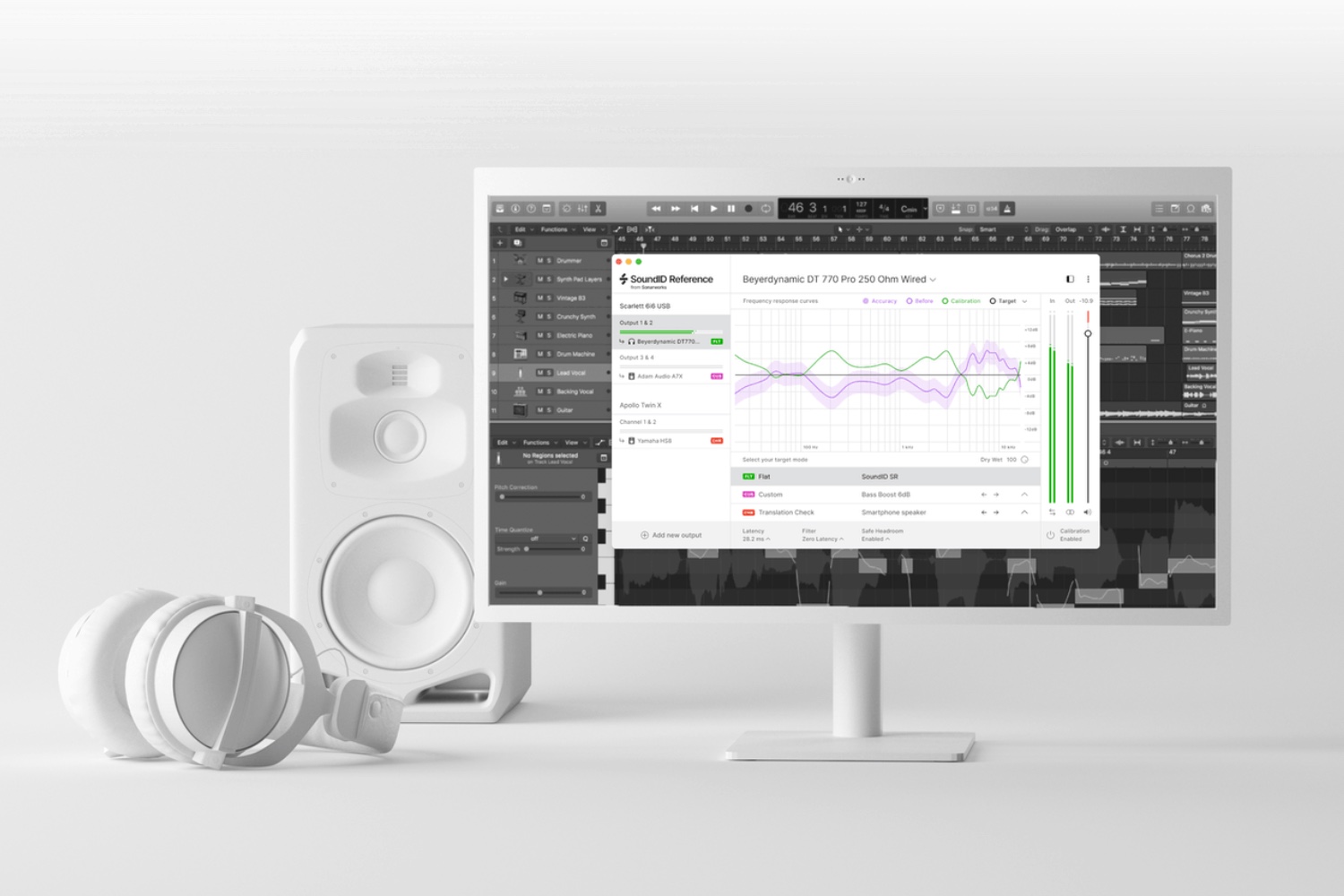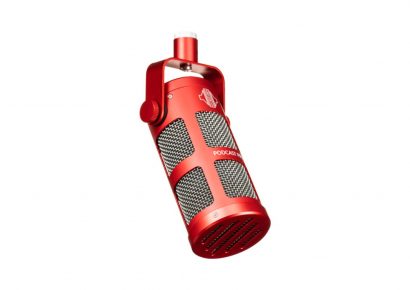Borleyco | Expect to pay: $499
I should start this review by stating, that in these uncertain times of untreated spaces, cheapo monitoring setups and even worse *gasp* – mixing through headphones – I for one 100% subscribe to the the use of high quality reference and calibration software to extract every bit of useable goodness out of your less than ideal monitoring situation. The reasons for this are many.
In the case of the headphone mixer or those using entry level monitoring equipment, it is without question the most straightforward way to ensure better mix translatability between the inherently biased vantage point of your ears, listening through your specific monitoring situation, and into the wild world of greater audience playback – an inexact science and something in which the margin for error is extremely fine.
Read all the latest music software and gear reviews here.
Using a digitally calibrated system is the ultimate insurance policy to ensure that you are giving yourself every opportunity to have your mixes flourish in as many listening contexts as possible.
For the itinerant engineer, software like Sonarwork’s acclaimed Reference series allows for better consistency from one work environment to the next, strengthening the relationship between speaker, headphone and room and providing a flexible and scalable monitoring situation throughout.
Such software has been pivotal in the popularisation of these kind DSP-based workflows, in many ways serving as the great equaliser (pun absolutely intended) between big budget studio and the humble home monitoring chain.
Sonarworks latest offering, SoundID Reference, sees the industry leaders in reference software up the ante yet again, this time by way of integrating several features found in the brand’s personalised listening products and combining them with the unrivalled feature set of the industry-leading Reference series, achieving the most powerful Reference suite yet (and also bringing the gap between perfectly calibrated, acoustically treated studio space and budget headphone monitoring into as close a proximity as they have ever been).
To cater to the highly personalised world of monitoring, Sonarworks have made SoundID Reference available in two separate versions, the first being for those using both headphones and speakers, with a second version available just for the standalone headphone users.
The system itself is divided into three separate and distinct entities: the system-wide app known as ‘standalone’ mode, the plug-in version, which can be thrown on a master bus or insert chain, and a separate room calibration app, SoundID Reference Measure, which is ideal for calibrating speakers in the open air.
As one would expect, open air calibration does require a reference mic of some kind, and Sonarwork’s own XREF20 microphone (which comes bundled with the full version) is as trustworthy and reliable as one is ever likely to encounter, particularly when used in conjunction with the company’s proprietary software.
There’s about 15 minutes of setup time required all up for SoundID Reference to work its magic and collect enough information from your setup to find the appropriate EQ curve, but once that’s all sorted, it’s off to the races we go.
After you’ve successfully calibrated your room, the standalone version will no doubt see the most action of the three aforementioned applications. The plug-in version can be useful for cross checking at the end of a mix, but you really want to be mixing with SoundID reference from the start, and the Standalone app is definitely the best for that, with minimal latency and no chance of leaving it engaged on the master bus.
Using SoundID Reference in conjunction with an industry standard pair of monitoring headphones (like Beyerdynamic 770s or Audio-Technica AT50Xs), the difference is obvious and immediate, bringing problematic areas to the fore and and providing an accurate indication of exactly what needs to be rectified.
Whereas most home setups so often struggle to accurately replicate low frequency and low-mid information – often resulting in too much or not enough of either – Sonarworks SoundID Reference provides an instantly workable, transparent vantage point from which to mix from, not only providing accurate frequency information, but also excellent recoil and transient decay. The effect this instantly has on overall mix quality is nothing short of astonishing.
I found that simply by integrating Sound ID Reference into my standard mobile setup, I was able to locate and incrementally attenuate masking frequencies with a higher level of detail than ever before. Notoriously tricky tasks like finding the perfect amount of mid cut on a kick, or where to set the low-pass filter on a band-passed snare were made infinitely more manageable thanks to the SoundID software.
When cross-checking previous mixes through the SoundID Reference software, broadband, overarching frequency issues and buildup were made immediately obvious and once attenuated, maintained these changes across multiple systems and listening environments.
While the automatically generated frequency curves are worth their weight in gold, there is also the ability to tweak from within the app as well. The new ‘Target Mode’ in particular is a doozy of a feature, allowing users to choose between ‘flat’, ‘’Custom’ and ‘Translation Check’ modes, in order to give as many cross checking options as possible before printing your final mix.
Within Custom mode there are adjustable low and high shelves, adjustable EQ points and Bell curve inputs to allow for maximum personalisation. While these can be handy for anybody with the specific game plan in mind, I found myself generally opting for the algorithmically generated curves.
Using the Translation Check features is amazing for checking how it’s going to sound in real world environments. You can emulate a bunch of classic devices including car stereos, phone speakers, TVs and both in-ear and over-ear headphones. These provide an invaluable checklist for final mixdown and are alone worth the cost of entry.
With speakers in the open air, it’s important to note that SoundID Reference cannot correct everything. When used on cheap speakers in a unworkable sounding room – like if you wanted to mix in a hall of mirrors for example, which nobody in their right mind would ever recommend – the amount of EQ correction required for something like this would most likely create some subtle but audible distortion, as the speakers would be working overtime to reproduce and attenuate the extreme shortcomings of your room.
This is why it’s recommended to first do some research on the space you’re using and treating existing standing waves and first reflection points with sound treatment before using this software.
Just like anything to do with monitoring, a little bit of optimisation can go a long way to getting the most out of your chain, so for those using speakers, be sure to put a bit of time into setting up your listening environment and give SoundID Reference every opportunity to do its thing, unimpeded.
Right now, access to music production software and digital audio workstations are at an all time high, while high end monitoring setups are at an all time low, meaning that the vast majority of music is being mixed and monitored in ways that are anything but conducive to a quality end product.
Using SoundID Reference by Sonarworks will give any audio setup a leg up in terms of clarity and translation. The combination of rock solid room calibration, speaker/headphone emulation and flattening of the acoustic issues associated with on-ear and over-ear headphones is one of the quickest and simplest ways to level out the playing field, and for that, there is simply no better product on the market than Sonarworks and the the latest incarnation of SoundID Reference. It’s simply one of the defining studio technologies of the current era.
Find out more about SoundID Reference via Sonarworks today. For local enquiries, reach out to Borleyco.

